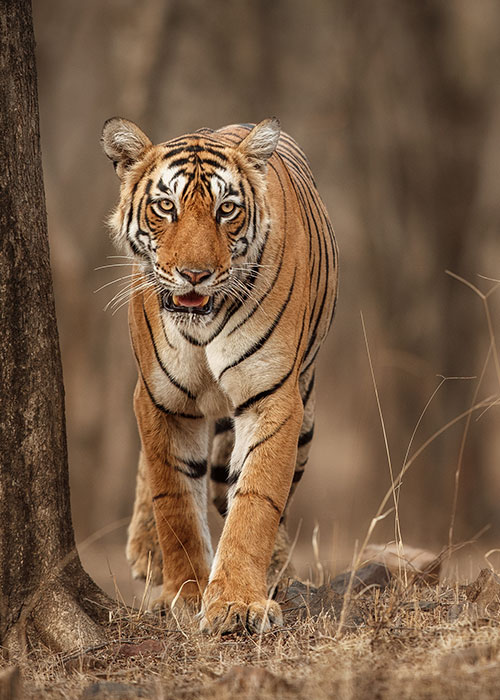Unleash the Wild Side: An Adrenaline Rush Experience of Jim Corbett National Park Jungle Safari
Amongst India's wildlife adventures, few destinations match the raw splendor and thrill that Jim Corbett National Park has to offer. Located in the Himalayan foothills, this world-famous wildlife reserve is a nature lover, wildlife watcher, and adventurer's paradise. Renowned for its thick forests, scenic landscapes, and diverse flora and fauna, Jim Corbett National Park is one of the oldest and most visited national parks in the nation.
A Glimpse into the Legacy of Jim Corbett
Formed in 1936 as Hailey National Park, the park was subsequently renamed after Edward James Corbett, a British hunter who turned conservationist and was instrumental in its formation. Covering parts of the districts of Nainital, Pauri, and Almora in the state of Uttarakhand, the park has an area of more than 500 square kilometers. It is not just a sanctuary for the endangered species such as the Bengal tiger but also a major eco-tourism spot in India.
The Safari Zones: Where Adventure Awaits
Jim Corbett National Park is divided into a number of safari zones, each providing distinct experiences and scenery. These are:
-
Dhikala Zone: The biggest and most sought-after zone, Dhikala is famous for its panoramic views of the Ramganga River and Sal forests. It's also the prime zone for viewing tigers, elephants, and other birdlife.
-
Bijrani Zone: Famous for its tranquil beauty and great tiger sighting possibilities, Bijrani provides both day jeep safari and canter safari. Grasslands here are perfect for the sighting of deer, wild boars, and sloth bears.
-
Jhirna Zone: Available all year long, Jhirna is the most popular zone among tourists due to its proximity and regular wildlife sighting. It is flora and fauna rich and is also a good spot for bird watching.
-
Durga Devi Zone: Most renowned for bird sightings, this zone is relatively under-explored, providing a serene safari experience. The hills contribute to its special charm.
-
Dhela Zone: The most recent addition, Dhela zone is available round the year and is slowly finding favor with growing tiger numbers as well as variegated fauna.
The prime attraction of a visit to the park is certainly the Jim Corbett national park jungle safari. It provides the tourists with an opportunity to see the wild in its natural environment, raw and unfiltered. The park has two principal forms of safaris:
1. Jeep Safari
A jeep safari is the most sought-after method of exploring the park. Operated twice a day—morning and evening—jeep safaris can accommodate a maximum of six individuals per jeep, with a trained guide. The open jeeps are ideal for navigating through the forest paths and enhance your chances of seeing wildlife. From a regal tiger crossing your way to a herd of elephants grazing in the open, each second during the safari is an experience of expectation and thrill.
2. Canter Safari
If you belong to a group or are not able to obtain a jeep safari permit, canter safaris are a good option. Open buses with a capacity of 16 people are used and typically run in the Dhikala zone. Canter safaris provide the same excitement and are as rewarding as far as viewing wildlife is concerned.
Best Time to Visit
Although the park is open for all months of the year, the ideal time to take a Jim Corbett national park jungle safari is between the months of November and June. Here, all the zones are easily accessible, and the probability of viewing wild life, particularly tigers, becomes much greater. The months from November to February are especially favorable as winter months, whereas the months from March to June are more favorable in terms of viewing due to better visibility since animals venture out for water.
Fauna and Flora
Jim Corbett National Park has more than 600 birds, 50 mammals, and 25 reptiles. Some animals that are easily visible include:
-
Bengal Tigers
-
Asiatic Elephants
-
Leopards
-
Sloth Bears
-
Indian Pangolins
-
Wild Boars
-
Crocodiles and Gharials in river areas
The vegetation of the park is also impressive, with Sal forests, grasslands, and bamboo jungles covering large parts of the park. These habitats harbor a rich and healthy population of wildlife.
Guidelines and Tips for a Safe Safari
In order to ensure your safety as well as the safety of wildlife, it's necessary to adhere to some simple rules:
-
Book your safari well in advance through official websites or registered agents.
-
Carry a valid ID proof at all times.
-
Always follow the instructions provided by the guide.
-
Keep quiet and do not litter throughout the safari.
-
Do not feed or annoy animals.
-
Dress in neutral tones and bring binoculars and a camera for better experience.
Where to Stay
Jim Corbett National Park provides accommodations for all budget types. Luxury resorts and eco lodges, budget hotels and forest rest houses, there are plenty of locations close to the park entrance. Some resorts provide guided nature walks and village tours to make your stay richer.
Final Thoughts
A visit to Jim Corbett National Park is not merely a holiday experience—it's an expedition to the core of the wild. If you are a wildlife photographer, a group of families looking for a nature getaway, or an individual looking for some adventure, the park provides an experience that you will never forget. The Jim Corbett national park jungle safari is an experience that allows you to dip into nature's unbridled beauty, with spine-tingling experiences that will remain etched in your memory forever.
So grab your bags, book your safari, and prepare to get lost in the unbridled splendor of India's top wildlife haven—Jim Corbett National Park.
 Visit Jim Corbett Park
Visit Jim Corbett Park.png)
